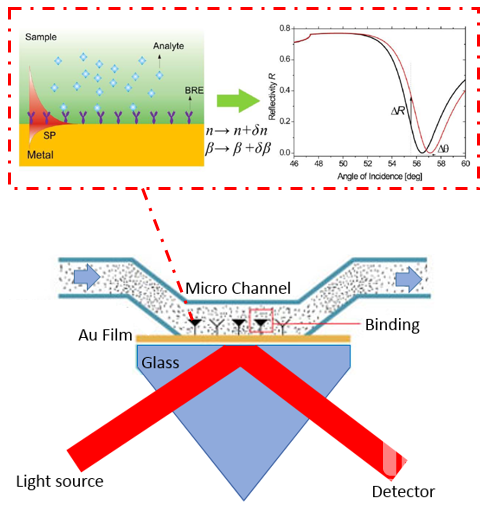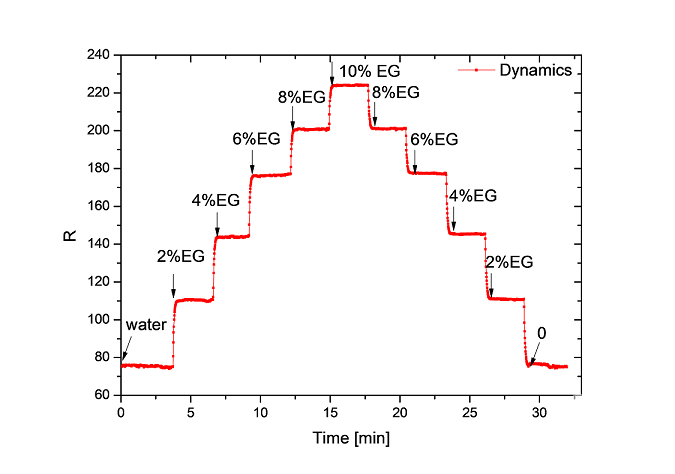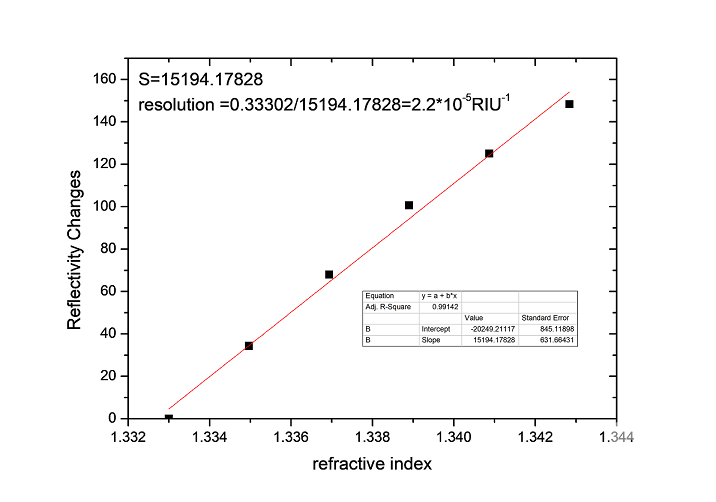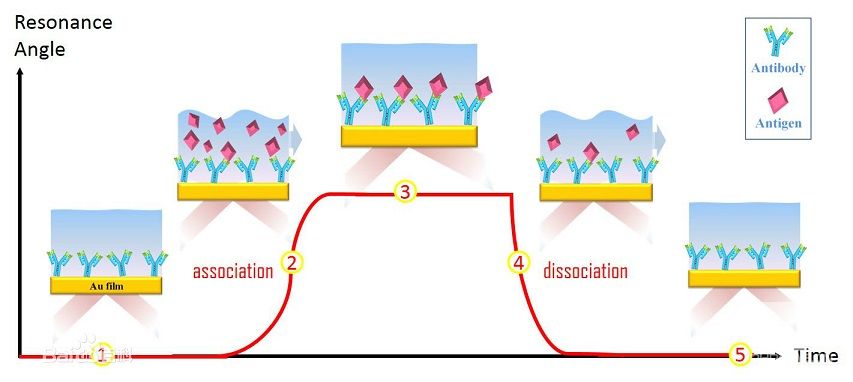SPR Biosensor technology
1 Technical principle
Surface plasmon resonance (SPR) is a physical optical phenomenon, which exists at the interface between metal and dielectric. When light is incident on the interface between metal and dielectric, the evanescent wave of total internal reflection causes free electrons of metal surface second to generate surface plasmon cell. After proper adjustment, when the light coupled into the metal film resonates with the surface plasmon unit, part of the energy of the incident light will be converted into the energy of the surface plasmon unit to form the surface plasmon resonance. When the refractive index of the material adsorbed on the surface of the metal film is different, the position of the resonance peak will be different. Therefore, this technique can be used to detect the change of refractive index of material on the surface of metal film. By functionalizing the surface of SPR sensor chip, the interactions between DNA and protein, between protein and protein, between drug and protein, between nucleic acid and nucleic acid, between antigen and antibody, between receptor and ligand, can be easily and quickly monitored. SPR has a wide range of applications in life sciences, medical testing, drug screening, food testing, environmental monitoring, drug testing and forensic identification.

Principle diagram of SPR sensing technology
Because the SPR sensor is very sensitive to the material refractive index on the surface of the sensor chip, different concentrations of NaOH solution are configured to test the reflected light intensity of SPR.
The kinetic curve is as follows, and its sensitivity is 2.2*10
-5RIU
-1.

 3 Kinetic testing
3 Kinetic testing

The specific binding process can be detected by functional modification of SPR sensor chip, which is characterized by real-time, sensitive and intuitive.



